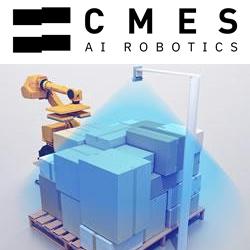We build all our robots around a popular open source robotics development framework, called Robot Operating System (ROS). Since it is open source, it makes it quite simple to integrate with other open source initiatives, like Android.
Matt Rendall | Clearpath Robotics
We sat down with Clearpath Robotics CEO and co-founder, Matt Rendall, to learn more about this leading edge robotics company. We got an insight scoop on their newest product, Grizzly Robotic Utility Vehicle (RUV), and learned how the beast is making a stir in the market.
Tell us about Clearpath Robotics, how was it started and what is its Mission?
There are four of us that founded Clearpath Robotics: myself (Matt Rendall), Bryan Webb, Ryan Gariepy, and Pat Martinson. We founded the Company in June 2009, but the project and the vision for the Company began in 2007. While we were attending the University of Waterloo Mechatronics Engineering program, we worked to create robots that cleared landmines in war torn countries. The idea had potential to save lives, but held significant risks. Because of our experience as students, we realized that academia needed reliable, out-of-the-box, affordable robotics research solutions. That's when we decided to pivot our focus from mine clearance to research and development, and shortly after that, we received our first order. By 2009, Clearpath Robotics was officially founded and production began on robust and reliable robotic platforms for military, industrial and academic robotics research.
Our vision is to automate the world's dullest, dirtiest and deadliest jobs, and through this vision, we have become a leader in the unmanned vehicles industry for research and development with clients including the Canadian Space Agency, the Department of National Defence, MIT and Carnegie Mellon University. Some of our most notable products are Grizzly, Husky and Kingfisher. All in all, the robotics industry is a very exciting area to be working in!
What are your core technology focuses?
Tell us about the Grizzly RUV.

How is the Grizzly breaking new grounds in research?
What applications do you foresee for the Grizzly?
Recently you wrote about being able to control a Grizzly RUV with an Android phone, tell us a bit about that.
What major trends are you seeing in the Robotics industry at this time?
Look in your crystal ball for a moment, where do you see Clearpath Robotics 5 years down the road?
.jpg)
The content & opinions in this article are the author’s and do not necessarily represent the views of RoboticsTomorrow
Featured Product


